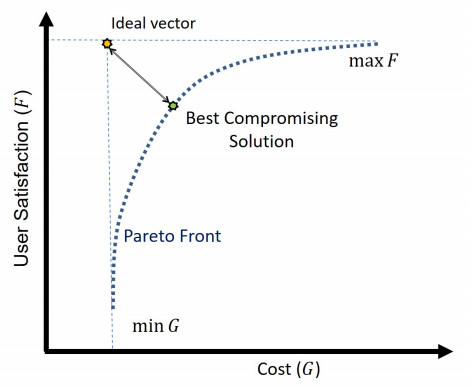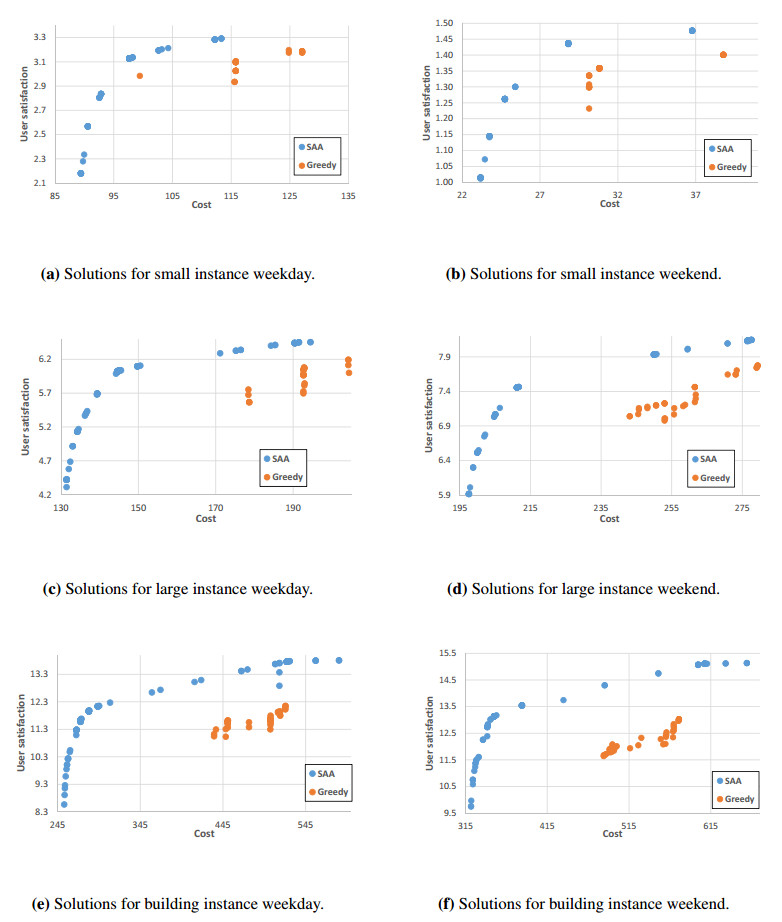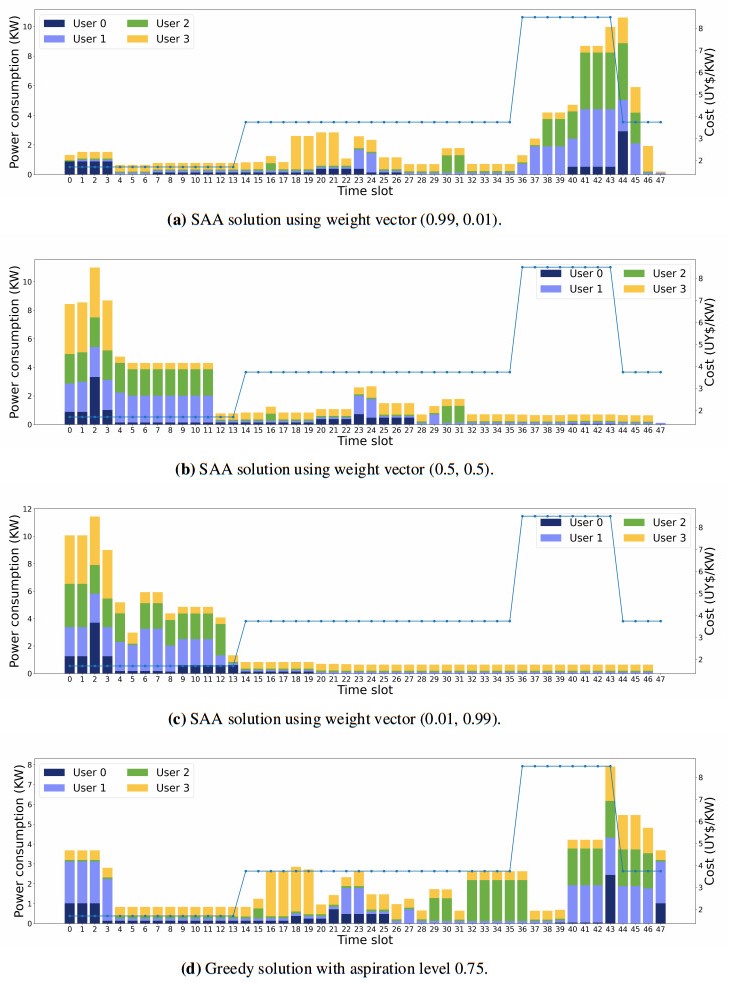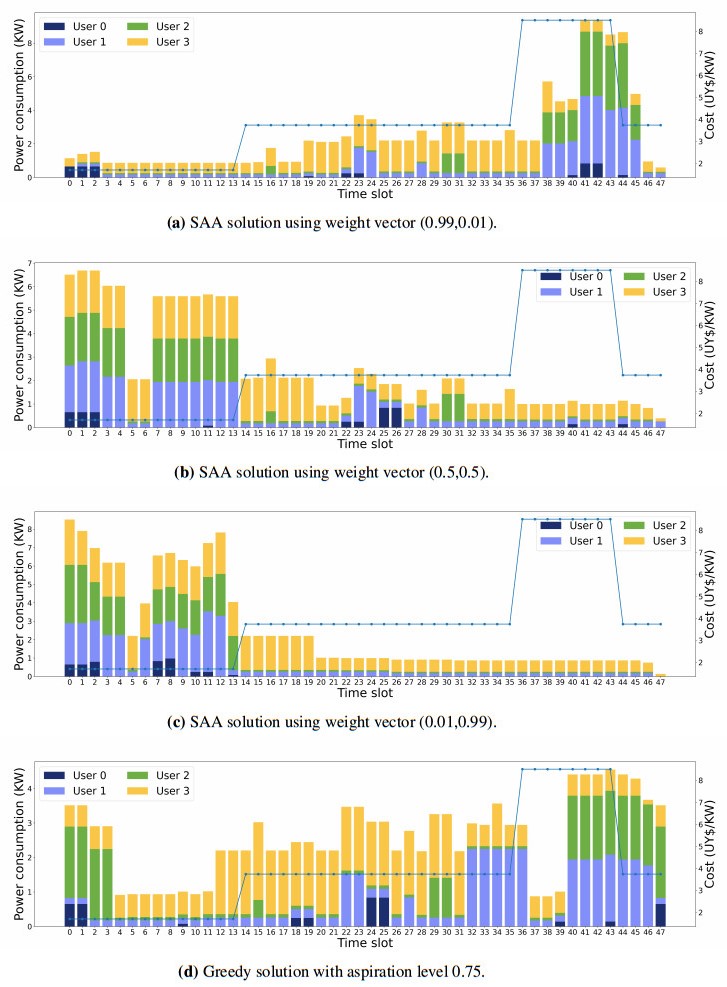|
[1]
|
C. Calvillo, A. Sánchez, J. Villar, Energy management and planning in smart cities, Renewable Sustainable Energy Rev., 55 (2016), 273–287. doi: 10.1016/j.rser.2015.10.133. doi: 10.1016/j.rser.2015.10.133

|
|
[2]
|
M. Harding, C. Lamarche, Empowering consumers through data and smart technology: Experimental evidence on the consequences of time-of-use electricity pricing policies, J. Policy Anal. Manage., 35 (2016), 906–931. doi: 10.1002/pam.21928. doi: 10.1002/pam.21928

|
|
[3]
|
M. Beaudin, H. Zareipour, Home energy management systems: A review of modelling and complexity, Renewable Sustainable Energy Rev., 45 (2015), 318–335. doi: 10.1016/j.rser.2015.01.046. doi: 10.1016/j.rser.2015.01.046

|
|
[4]
|
W. Li, T. Logenthiran, W. Woo, Intelligent multi-agent system for smart home energy management, in 2015 IEEE Innovative Smart Grid Technologies-Asia, (2015), 1–6. doi: 10.1109/ISGT-Asia.2015.7386985.
|
|
[5]
|
W. Li, T. Logenthiran, V. Phan, W. Woo, A novel smart energy theft system (SETS) for IoT-based smart home, IEEE Internet Things J., 6 (2019), 5531–5539. doi: 10.1109/JIOT.2019.2903281.
|
|
[6]
|
J. Chavat, J. Graneri, S. Nesmachnow, Household energy disaggregation based on pattern consumption similarities, in Ibero-American Congress of Smart Cities, (2019), 54–69.
|
|
[7]
|
J. Chavat, S. Nesmachnow, J. Graneri, Nonintrusive energy disaggregation by detecting similarities in consumption patterns, Revista Facultad de Ingeniería Universidad de Antioquia, 98 (2021), 27–46. doi: 10.17533/udea.redin.20200370.
|
|
[8]
|
R. Porteiro, S. Nesmachnow, L. Hernández-Callejo, Short term load forecasting of industrial electricity using machine learning, in Ibero-American Congress of Smart Cities, (2019), 146–161.
|
|
[9]
|
J. Kolter, M. Johnson, REDD: A public data set for energy disaggregation research, in Workshop on Data Mining Applications in Sustainability (SIGKDD), 2011.
|
|
[10]
|
D. Rossit, Desarrollo de modelos y algoritmos para optimizar redes logísticas de residuos sólidos urbanos, Universidad Nacional del Sur, 2018. Available from: http://repositoriodigital.uns.edu.ar/handle/123456789/4436.
|
|
[11]
|
D. Rossit, J. Toutouh, S. Nesmachnow, Exact and heuristic approaches for multi-objective garbage accumulation points location in real scenarios, Waste Manage., 105 (2020), 467–481. doi: 10.1016/j.wasman.2020.02.016. doi: 10.1016/j.wasman.2020.02.016

|
|
[12]
|
S. Robinson, Analysis of sample-path optimization, Math. Oper. Res., 21 (1996), 513–528. doi: 10.1287/moor.21.3.513. doi: 10.1287/moor.21.3.513

|
|
[13]
|
A. Shapiro, Monte Carlo simulation approach to stochastic programming, in Proceeding of the 2001 Winter Simulation Conference, (2001), 428–431. doi: 10.1109/WSC.2001.977317
|
|
[14]
|
A. Kleywegt, A. Shapiro, T. Homem-de-Mello, The sample average approximation method for stochastic discrete optimization, SIAM J. Optimization, 12 (2002), 479–502. doi: 10.1137/S1052623499363220. doi: 10.1137/S1052623499363220

|
|
[15]
|
V. Norkin, G. Pflug, A. Ruszczyński, A branch and bound method for stochastic global optimization, Math. Programm., 83 (1998), 425–450. doi: 10.1007/BF02680569. doi: 10.1007/BF02680569

|
|
[16]
|
B. Verweij, S. Ahmed, A. Kleywegt, G. Nemhauser, A. Shapiro, The sample average approximation method applied to stochastic routing problems: a computational study, Comput. Optim. Appl., 24 (2003), 289–333. doi: 10.1023/A:1021814225969. doi: 10.1023/A:1021814225969

|
|
[17]
|
T. Cormen, C. Leiserson, R. Rivest, C. Stein, Introduction to Algorithms, MIT press, (2009), 414–443.
|
|
[18]
|
G. Colacurcio, S. Nesmachnow, J. Toutouh, F. Luna, D. Rossit, Multiobjective household energy planning using evolutionary algorithms, in Ibero-American Congress of Smart Cities, (2019), 269–284.
|
|
[19]
|
S. Nesmachnow, G. Colacurcio, D. Rossit, J. Toutouh, F. Luna, Optimizing household energy planning in Smart cities: a multiobjective approach, Revista Facultad de Ingeniería Universidad de Antioquia, 101 (2021), 8–19. doi: 10.17533/udea.redin.20200587.
|
|
[20]
|
E. Orsi, S. Nesmachnow, Smart home energy planning using IoT and the cloud, in 2017 IEEE URUCON, 2017. doi: 10.1109/URUCON.2017.8171843.
|
|
[21]
|
X. Lu, K. Zhou, X. Zhang, S. Yang, A systematic review of supply and demand side optimal load scheduling in a smart grid environment, J. Cleaner Prod., 203 (2018), 757–768. doi: 10.1016/j.jclepro.2018.08.301. doi: 10.1016/j.jclepro.2018.08.301

|
|
[22]
|
I. Koutsopoulos, L. Tassiulas, Control and optimization meet the smart power grid: Scheduling of power demands for optimal energy management, in Proceedings of the 2nd International Conference on Energy-efficient Computing and Networking, (2011), 41–50. doi: 10.1145/2318716.2318723.
|
|
[23]
|
H. Liang, W. Zhuang, Stochastic modeling and optimization in a microgrid: A survey, Energies, 7 (2014), 2027–2050. doi: 10.3390/en7042027. doi: 10.3390/en7042027

|
|
[24]
|
X. Chen, T. Wei, S. Hu, Uncertainty-aware household appliance scheduling considering dynamic electricity pricing in smart home, IEEE Trans. Smart Grid, 4 (2013), 932–941. doi: 10.1109/TSG.2012.2226065 doi: 10.1109/TSG.2012.2226065

|
|
[25]
|
R. Hemmati, H. Saboori, Stochastic optimal battery storage sizing and scheduling in home energy management systems equipped with solar photovoltaic panels, Energy Build., 152 (2017), 290–300. doi: 10.1016/j.enbuild.2017.07.043. doi: 10.1016/j.enbuild.2017.07.043

|
|
[26]
|
M. Jacomino, M. Le, Robust energy planning in buildings with energy and comfort costs, 4OR, 10 (2012), 81–103. doi: 10.1007/s10288-011-0192-6. doi: 10.1007/s10288-011-0192-6

|
|
[27]
|
C. Wang, Y. Zhou, B. Jiao, Y. Wang, W. Liu, D. Wang, Robust optimization for load scheduling of a smart home with photovoltaic system, Energy Convers. Manage., 102 (2015), 247–257. doi: 10.1016/j.enconman.2015.01.053. doi: 10.1016/j.enconman.2015.01.053

|
|
[28]
|
J. Wang, P. Li, K. Fang, Y. Zhou, Robust optimization for household load scheduling with uncertain parameters, Appl. Sci., 8 (2018), 575. doi: 10.3390/app8040575. doi: 10.3390/app8040575

|
|
[29]
|
M. Judge, A. Manzoor, C. Maple, J. Rodrigues, S. Ul Islam, Price-based demand response for household load management with interval uncertainty, Energy Rep., 2021 2021. doi: 10.1016/j.egyr.2021.02.064.
|
|
[30]
|
A. Heidari, S. Mirjalili, H. Faris, I. Aljarah, M. Mafarja, H. Chen, Harris hawks optimization: Algorithm and applications, Future Gener. Comput. Syst., 97 (2019), 849–872. doi: 10.1016/j.future.2019.02.028. doi: 10.1016/j.future.2019.02.028

|
|
[31]
|
S. Hosseini, R. Carli, M. Dotoli, Robust optimal energy management of a residential microgrid under uncertainties on demand and renewable power generation, IEEE Trans. Autom. Sci. Eng., 18 (2020), 618–637. doi: 10.1109/TASE.2020.2986269. doi: 10.1109/TASE.2020.2986269

|
|
[32]
|
R. Shi, S. Li, P. Zhang, K. Lee, Integration of renewable energy sources and electric vehicles in V2G network with adjustable robust optimization, Renewable Energy, 153 (2020), 1067–1080. doi: 10.1016/j.renene.2020.02.027. doi: 10.1016/j.renene.2020.02.027

|
|
[33]
|
P. Scarabaggio, S. Grammatico, R. Carli, M. Dotoli, Distributed demand side management with stochastic wind power forecasting, IEEE Trans. Control Syst. Technol., 2021 (2021), 1–6. doi: 10.1109/TCST.2021.3056751. doi: 10.1109/TCST.2021.3056751

|
|
[34]
|
M. Nassourou, J. Blesa, V. Puig, Robust economic model predictive control based on a zonotope and local feedback controller for energy dispatch in smart-grids considering demand uncertainty, Energies, 13 (2020), 3. doi: 10.3390/en13030696. doi: 10.3390/en13030696

|
|
[35]
|
K. Kursawe, G. Danezis, M. Kohlweiss, Privacy-friendly aggregation for the smart-grid, in International Symposium on Privacy Enhancing Technologies Symposium, (2011), 175–191. doi: 10.1007/978-3-642-22263-4_10.
|
|
[36]
|
S. Tonyali, O. Cakmak, K. Akkaya, M. Mahmoud, I. Guvenc, Secure data obfuscation scheme to enable privacy-preserving state estimation in smart grid AMI networks, IEEE Internet Things J., 3 (2016), 709–719. doi: 10.1109/JIOT.2015.2510504. doi: 10.1109/JIOT.2015.2510504

|
|
[37]
|
H. Mohammed, S. Tonyali, K. Rabieh, M. Mahmoud, K. Akkaya Efficient privacy-preserving data collection scheme for smart grid AMI networks, in 2016 IEEE Global Communications Conference, (2016), 1–6. doi: 10.1109/GLOCOM.2016.7841782.
|
|
[38]
|
H. Chang, W. Chiu, H. Sun, C. Chen, User-centric multiobjective approach to privacy preservation and energy cost minimization in smart home, IEEE Syst. J., 13 (2018), 1030–1041. doi: 10.1109/JSYST.2018.2876345. doi: 10.1109/JSYST.2018.2876345

|
|
[39]
|
O. Tan, D. Gündüz, J. Gómez, Optimal privacy-cost trade-off in demand-side management with storage, in 2015 IEEE 16th International Workshop on Signal Processing Advances in Wireless Communications, (2015), 370–374. doi: 10.1109/SPAWC.2015.7227062.
|
|
[40]
|
Z. Yahia, A. Pradhan, Optimal load scheduling of household appliances considering consumer preferences: An experimental analysis, Energy, 163 (2018), 15–26. doi:10.1016/j.energy.2018.08.113. doi: 10.1016/j.energy.2018.08.113

|
|
[41]
|
Z. Yahia, A. Pradhan, Multi-objective optimization of household appliance scheduling problem considering consumer preference and peak load reduction, Sustainable Cities Soc., 55 (2020), 102058. doi: 10.1016/j.scs.2020.102058. doi: 10.1016/j.scs.2020.102058

|
|
[42]
|
S. Nesmachnow, D. Rossit, J. Toutouh, F. Luna, An explicit evolutionary approach for multiobjective energy consumption planning considering user preferences in smart homes, Int. J. Ind. Eng. Comput., 12 (2021), 365–380. doi: 10.5267/j.ijiec.2021.5.005. doi: 10.5267/j.ijiec.2021.5.005

|
|
[43]
|
S. Nesmachnow, S. Baña, R. Massobrio, A distributed platform for big data analysis in smart cities: combining intelligent transportation systems and socioeconomic data for Montevideo, Uruguay, EAI Endorsed Trans. Smart Cities, 2 (2017), 153478. doi: 10.4108/eai.19-12-2017.153478.
|
|
[44]
|
M. Goldberg, Measure twice, cut once, IEEE Power Energy Mag., 8 (2010), 46–54. doi: 10.1109/MPE.2010.936351.
|
|
[45]
|
J. Chavat, S. Nesmachnow, J. Graneri, G. Alvez, ECD-UY: Detailed household electricity consumption dataset of Uruguay, Sci. Data, Forthcoming, 2021.
|
|
[46]
|
A. Rad, T. Barforoushi, Optimal scheduling of resources and appliances in smart homes under uncertainties considering participation in spot and contractual markets, Energy, 192 (2020), 116548. doi: 10.1016/j.energy.2019.116548. doi: 10.1016/j.energy.2019.116548

|
|
[47]
|
S. Hosseini, R. Carli, M. Dotoli, Robust day-ahead energy scheduling of a smart residential user under uncertainty, in 2019 18th European Control Conference (ECC), (2019), 935–940. doi: 10.23919/ECC.2019.8796182.
|
|
[48]
|
Gurobi Optimization, LLC, Gurobi Optimizer Reference Manual, 2020. Available from: http://www.gurobi.com.
|
|
[49]
|
W. E. Hart, C. D. Laird, J. P. Watson, D. L. Woodruff, G. Hackebeil, B. L. Nicholson, et al., Pyomo-optimization Modeling in Python, Springer, 2017.
|
|
[50]
|
W. Chiu, J. Hsieh, C. Chen, Pareto optimal demand response based on energy costs and load factor in smart grid, IEEE Trans. Ind. Inf., 16 (2019), 1811–1822. doi: 10.1109/TII.2019.2928520. doi: 10.1109/TII.2019.2928520

|
|
[51]
|
S. Pal, B. Singh, R. Kumar, B. Panigrahi, Consumer end load scheduling in DSM using multi-objective genetic algorithm approach, in 2015 IEEE International Conference on Computational Intelligence & Communication Technology, (2015), 518–523. doi: 10.1109/CICT.2015.65.
|

















 DownLoad:
DownLoad: